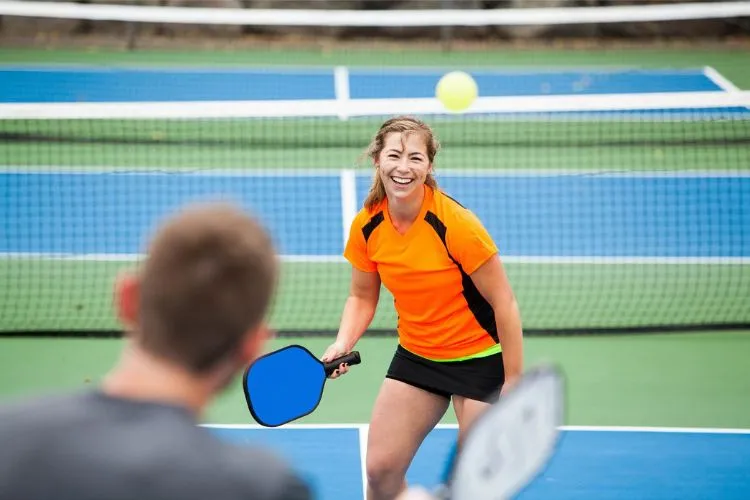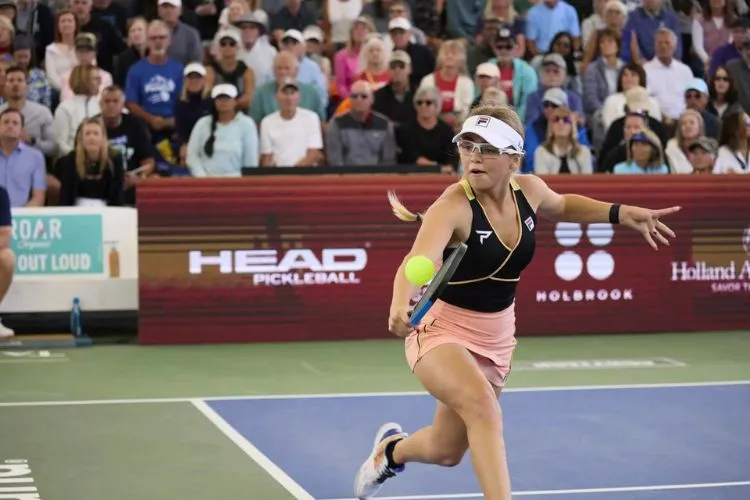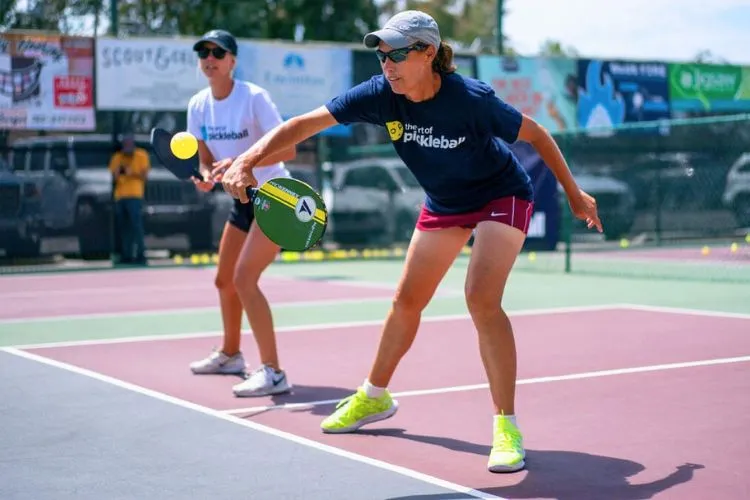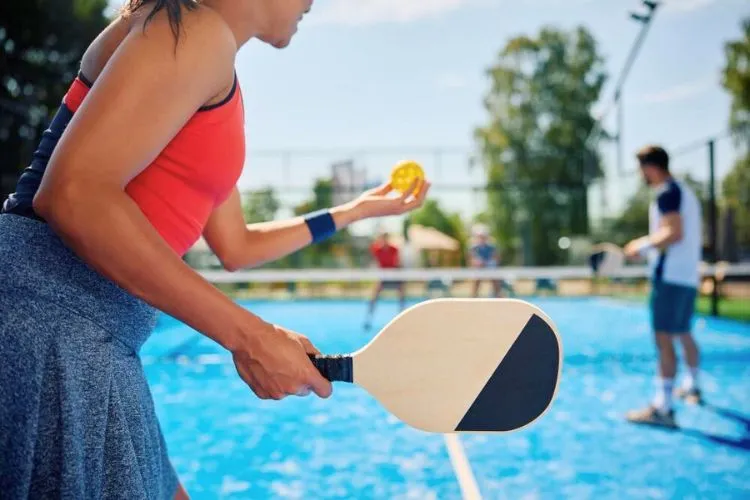Pickleball has surged in popularity, attracting players from various demographics and athletic backgrounds. As with any sport, however, injuries are inevitable.
Among these, a torn meniscus stands out due to its impact on mobility.
The condition raises a valid concern: can I play pickleball with a torn meniscus?
Basically, I will try to help you understand if yo can safely return to the pickleball court after experiencing a meniscus tear.

Understanding a Meniscus Tear
The meniscus is a piece of cartilage in the knee that cushions and stabilizes the joint. It aids in smooth movement and bears much of the body’s weight during activities.
When this structure is damaged, it can lead to pain, swelling, and limited range of motion.
Meniscus tears are often the result of twisting movements or direct impacts, common in sports and physical activities.
Immediate Steps After a Meniscus Tear
Prompt action is crucial following a suspected meniscus tear. Initial steps include the application of the R.I.C.E method — rest, ice, compression, and elevation. These measures aim to reduce inflammation and pain.
Despite the urge to return to normal activities, consulting with a healthcare professional is essential to understand the extent of the injury and appropriate next steps.
Medical Assessment
An accurate diagnosis often requires an MRI scan, which provides a detailed image of the knee’s internal structures.
The specific location and severity of the tear greatly influence the treatment plan. Some cases might only require conservative management, while others necessitate surgical intervention.
Treatment Options
Non-surgical treatments, such as physical therapy and medications, are effective for minor injuries.
Physical therapy focuses on strengthening the muscles around the knee, improving flexibility, and reducing strain on the meniscus.

In cases where surgery is required, the recovery timeline and return to sports will vary. Adhering to a rehabilitation plan is vital to a successful recovery.
Returning to Pickleball Post-Injury
Recovering from a meniscus tear involves slowly rebuilding strength and endurance. Gradually resuming pickleball or any other physical activity allows the body to adapt without risking further injury.
A cautious approach, closely monitored by healthcare providers, ensures that the knee is ready to handle the demands of the sport.
Can I Play Pickleball With A Torn Meniscus?
Can You Play?
In theory, playing pickleball with a torn meniscus is possible, especially in cases of minor tears. However, this comes with significant caveats.
Firstly, an individual’s overall fitness, the tear’s severity, and the knee’s stability are crucial factors. Playing on a severely damaged knee without proper healing or protection can lead to increased damage and pain.
Adjusting Your Play Style
Adapting your play style can reduce the risk of aggravating a meniscus tear. Opting for a more strategic game that limits quick, sharp movements decreases stress on the knee.
Supportive gear, such as soft knee braces, can offer additional stability without impairing mobility. Choosing proper footwear that provides adequate cushioning and support further minimizes knee strain.
Risks and Considerations
Playing pickleball with a torn meniscus is not without risks. There’s always a possibility of exacerbating the injury, leading to longer recovery times or more severe complications.
Players need to weigh the benefits of activity against potential harm to their long-term knee health.
Protective Measures and Equipment
Investing in high-quality, supportive gear can make a significant difference. Knee braces specifically designed for sports offer protection while allowing for the flexibility needed in pickleball.

Proper shoes reduce the impact on the knees and improve stability, preventing unnecessary strain.
Alternative Exercises and Activities
Staying active without risking further damage to the knee is crucial during recovery.
Low-impact activities such as swimming, cycling, and tailored strength training can maintain fitness levels without placing undue stress on the injured area.
These exercises promote healing and prepare the body for a return to the court.
Prevention Strategies for Pickleball Players
A key element in minimizing injury risk for pickleball players starts with dedicated warm-up and stretching routines.

Dynamic warm-ups activate muscles and increase blood flow, while targeted stretching improves flexibility, both critical in preventing meniscus and other injuries.
Beyond this foundational step, engaging in sport-specific training and conditioning fortifies the body against the rigors of intense play.
Strengthening core, leg, and knee muscles enhances stability and shock absorption, directly safeguarding the meniscus.
Emphasizing proper technique is equally vital; mastering footwork, strokes, and positions not only elevates game performance but also ensures that movements are biomechanically sound, evenly distributing stress and reducing the likelihood of acute or overuse injuries.
Together, these strategies form a comprehensive defense against the common pitfalls endangering knee health in pickleball aficionados.
Frequently Asked Questions (FAQs)
How long after a meniscus tear can I return to playing pickleball?
The return to pickleball depends on the injury’s severity and the individual’s recovery progress. Some may resume light activities within weeks, while others might require several months.
Are there specific exercises to strengthen my knees post-meniscus tear?
Yes, exercises focusing on strengthening the quadriceps, hamstrings, and calf muscles support the knee and reduce the load on the meniscus. A physical therapist can design a personalized regimen.
Is it better to use cold or hot therapy for a torn meniscus while playing?
Cold therapy is recommended immediately following activity to reduce inflammation. Heat therapy can aid in relaxing and loosening tissues and is best used before physical activity.
u003cstrongu003eCan a knee brace prevent a meniscus tear from getting worse during play?u003c/strongu003e
While a knee brace can offer support and stability, it does not guarantee prevention of injury exacerbation. The best approach is to follow medical advice and adopt a modified play style.
Are there any long-term effects of playing pickleball with a torn meniscus?
Playing with an untreated or improperly healed meniscus tear can lead to chronic knee problems, including arthritis and decreased mobility.
Conclusion:
Returning to pickleball after a meniscuc tear requires careful consideration, a well-planned recovery, and adherence to professional guidance.
Although the desire to return to play is understandable, prioritizing knee health and long-term functionality is paramount.
With proper treatment, adjustments in play style, and the use of supportive equipment, many players successfully return to the court without compromising their knee health.

Pickleball’s more than a game to me—it’s a passion. I write, sharing its highs and lows, the thrills and the lessons. Some tales might draw you to the court, while others give a hint of the game’s magic. So, curious about my journey? Ready to dive deep into the world of pickleball with me? Let’s go.
